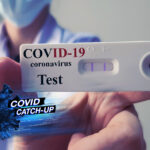ATAGI now recommends an additional covid booster shot ahead of flu season, but only for certain high-risk populations.
ATAGI has authorised winter covid-19 booster shots to shore up immunity for elderly, disabled, Indigenous and immunocompromised Australians ahead of flu season.
More specifically, the cohorts included in the announcement were people aged 65 or above, residents of disability or aged care facilities, people aged 16 or over who are severely immunocompromised and Aboriginal and Torres Strait Islander people aged 50 or above.
Healthcare, aged care and disability care workers are not included, but ATAGI said it was “continuing to evaluate emerging evidence” over the coming weeks.
“ATAGI also does not consider there to be sufficient evidence of benefits to recommend additional boosters in occupational groups, such as workers in aged care, residential care or healthcare,” the advisory group said.
“This is based on evidence suggesting that protection from booster doses against transmission of the Omicron variant may be limited and short-lived.”
The winter dose can be given either four months after the patient’s first booster, or four months after a covid infection if they caught the virus in between.
In exceptional circumstances, ATAGI said, this gap can be shortened to three months.
It will be the fifth dose for many in the immunocompromised group, who were already eligible to receive a three-dose primary course and one booster.
The second booster can be co-administered with this year’s flu vaccine from April, although ATAGI recommends giving the flu vaccine on its own as a priority if the patient is not yet eligible for the additional booster.
Pfizer and Moderna are the preferred vaccines for this campaign, but AstraZeneca can be used when an mRNA vaccine is contraindicated or declined and Novavax can be used if no other vaccine is suitable.
Professor Raina MacIntyre, head of the Biosecurity Program at the Kirby Institute at the University of NSW, welcomed ATAGI’s decision.
“A fourth dose brings immunity back up to levels similar or a little higher than early after the third dose,” she said.
“Without a fourth dose, there is little protection against symptomatic infection – a fourth dose raises this to 31-43 per cent which is important on a population level.”
The infectious diseases expert also said that the rate of third doses in the community was “still too low”, at around 68% in the general population and 50% in the Aboriginal and Torres Strait Islander population.
“We now need to get third dose rates up to 90 per cent or higher,” Professor MacIntyre said.
Professor MacIntyre’s comments come hot on the heels of the RACGP’s call to launch a public health campaign encouraging booster doses.
“Winter is fast approaching, and we need to act with urgency,” RACGP President Dr Karen Price said.
“The federal government should launch a media campaign encouraging all eligible people to get their booster dose as soon as possible.”
Last week, the Department of Health announced a $2.1 billion package to combat covid and flu this winter, with half going toward the residential aged care and disability care sector.
Almost $600 million was earmarked for vaccines, with the rest going toward other vulnerable population groups.






